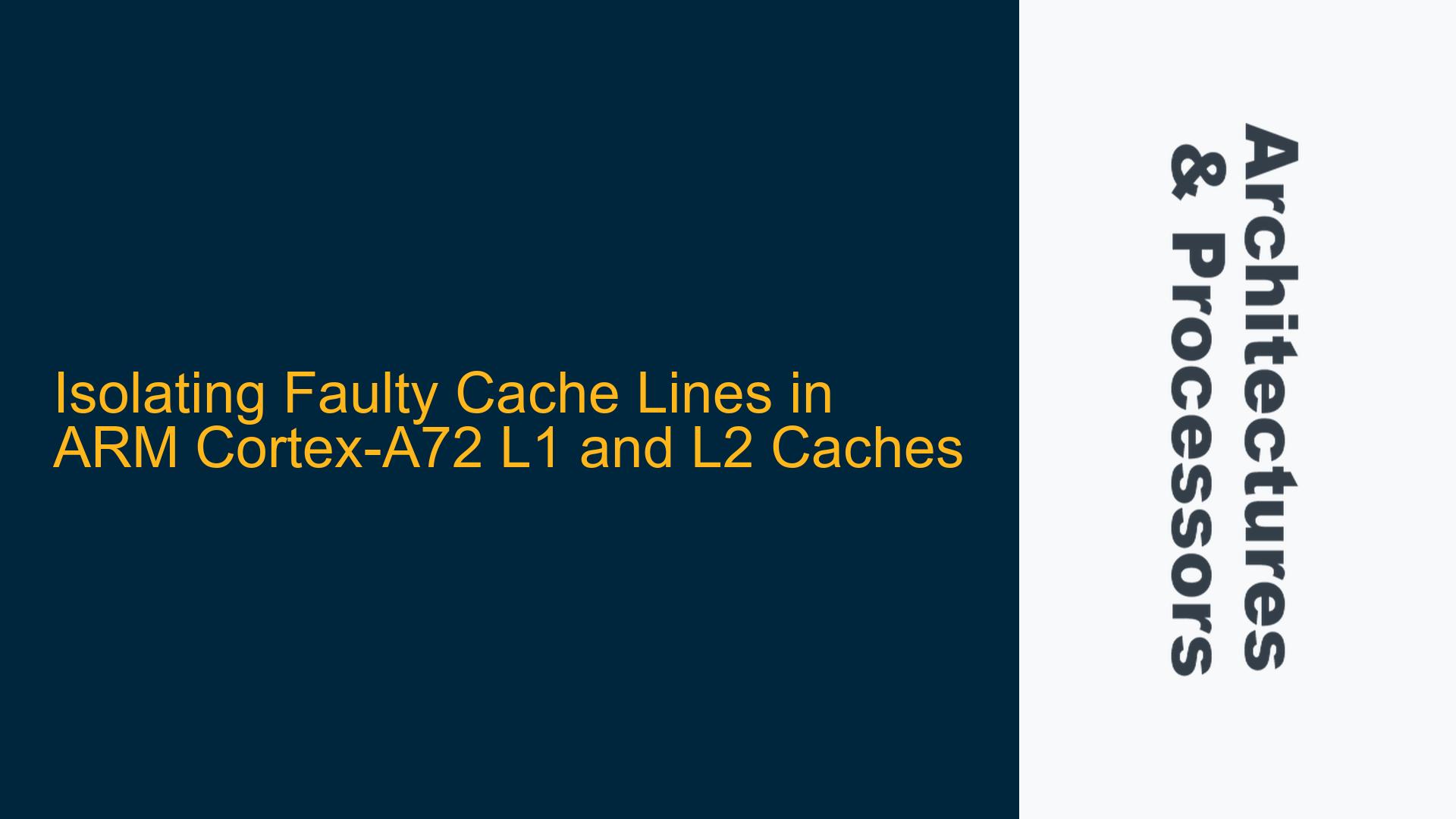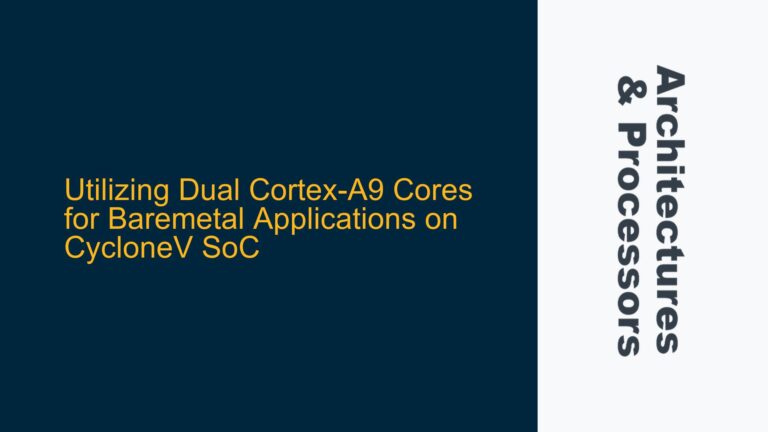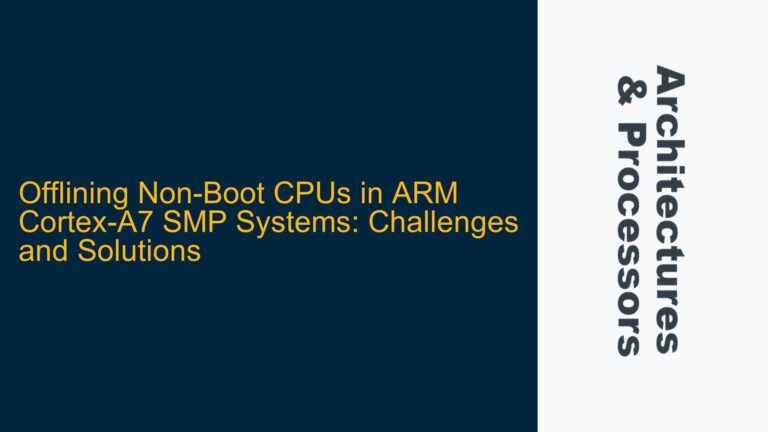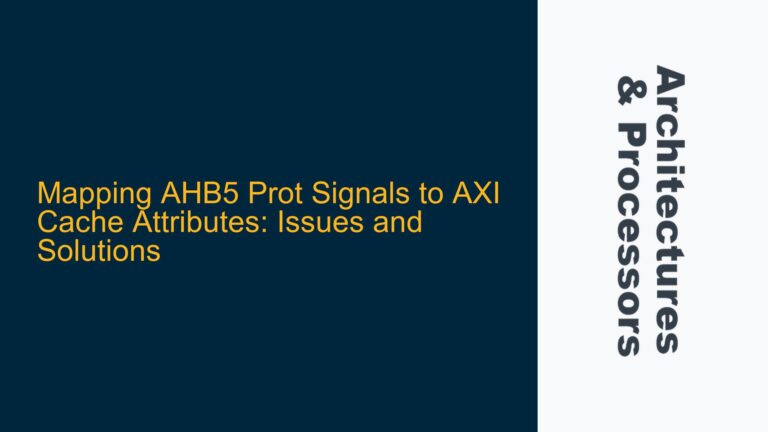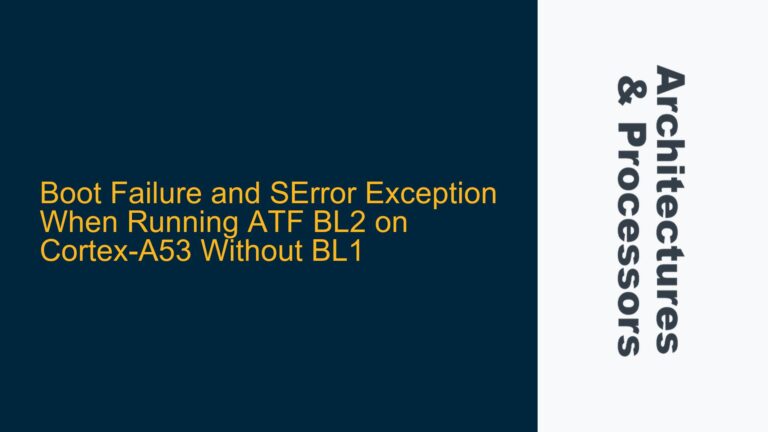ARM Cortex-A72 Cache Line Hardware Failures and System Continuity
In high-performance embedded systems utilizing the ARM Cortex-A72 processor, hardware failures in the L1 or L2 caches can pose significant challenges to system reliability and continuity. The Cortex-A72, a high-efficiency core designed for advanced applications, relies heavily on its cache hierarchy to deliver optimal performance. However, when hardware failures occur in the cache lines, these failures can be permanent, leading to data corruption, system crashes, or unpredictable behavior. The ability to isolate faulty cache lines while allowing the CPU to continue operating is critical for maintaining system availability, especially in mission-critical applications.
The Cortex-A72 features separate L1 instruction and data caches, each typically 32-48 KB in size, and a unified L2 cache ranging from 512 KB to 2 MB. Cache lines in these caches are typically 64 bytes in size. Hardware failures in these caches can manifest as stuck-at faults, transition faults, or coupling faults, which may affect individual cache lines or larger cache regions. When such failures occur, the system must detect and isolate the faulty cache lines to prevent further corruption and ensure continued operation.
The challenge lies in identifying the specific cache lines affected by hardware failures and implementing mechanisms to isolate them without compromising the overall system performance. This requires a deep understanding of the Cortex-A72 cache architecture, the ARMv8-A memory model, and the hardware-software interactions involved in cache management.
Cache Line Fault Detection and Isolation Mechanisms
The isolation of faulty cache lines in the Cortex-A72 L1 and L2 caches involves several potential causes and mechanisms. One primary cause of cache line failures is manufacturing defects or aging-related wear-out, which can lead to permanent faults in the cache memory cells. Another cause is environmental factors such as radiation or temperature extremes, which can induce transient or permanent faults in the cache hardware.
The Cortex-A72 provides several features that can aid in the detection and isolation of faulty cache lines. These include the Error Correcting Code (ECC) mechanisms, parity checking, and cache maintenance operations. ECC can detect and correct single-bit errors and detect multi-bit errors, while parity checking can detect single-bit errors. However, these mechanisms are not always sufficient to isolate faulty cache lines, especially in cases of multi-bit errors or permanent faults.
To isolate faulty cache lines, the system must first detect the errors. This can be done through runtime monitoring of cache access patterns, ECC error reporting, or parity error detection. Once an error is detected, the system must determine the specific cache line or lines affected. This can be achieved through diagnostic software that performs targeted read/write operations to the cache and monitors for errors.
The Cortex-A72 also supports cache lockdown, which allows specific cache lines to be locked into the cache, preventing their eviction. This feature can be used to isolate faulty cache lines by locking them and preventing further access. Additionally, the Cortex-A72 provides cache maintenance operations such as cache invalidation and cleaning, which can be used to manage the cache contents and isolate faulty lines.
Implementing Cache Line Isolation in Cortex-A72 Systems
To implement cache line isolation in Cortex-A72 systems, a combination of hardware and software techniques must be employed. The first step is to enable and configure the ECC and parity checking mechanisms in the L1 and L2 caches. This involves setting the appropriate bits in the CPU control registers and ensuring that the memory controller is configured to support ECC.
Once the error detection mechanisms are in place, the system must implement runtime monitoring of cache errors. This can be done through interrupt handlers that respond to ECC or parity errors and log the error details, including the cache level and address of the faulty cache line. The error handler should also perform a diagnostic routine to confirm the fault and determine its scope.
After identifying the faulty cache line, the system must isolate it to prevent further access. This can be done by locking the faulty cache line using the cache lockdown feature. The cache lockdown feature is controlled through the CPU control registers and allows specific cache ways or lines to be locked. Once locked, the faulty cache line will not be evicted or replaced, effectively isolating it from further use.
In cases where cache lockdown is not sufficient, the system may need to implement software-based isolation. This involves modifying the operating system or firmware to avoid using the memory addresses associated with the faulty cache line. This can be done by marking the affected memory regions as reserved or unusable in the system’s memory map.
Finally, the system should implement a recovery mechanism to handle the loss of the isolated cache line. This may involve redistributing the workload to other cache lines or cores, or using higher-level memory (e.g., L3 cache or main memory) to compensate for the loss of cache capacity. The system should also log the fault and notify the system administrator or maintenance personnel for further action.
In summary, isolating faulty cache lines in the ARM Cortex-A72 L1 and L2 caches requires a comprehensive approach that combines hardware error detection mechanisms, cache maintenance operations, and software-based isolation techniques. By implementing these steps, system designers can ensure continued operation and reliability in the face of cache hardware failures.
